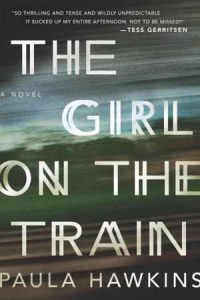Sales of Girl on a Train have enjoyed a significant boost from a movie of the same title – or is it the same title?
The Girl on the Train was a best-selling novel by Paula Hawkins that was made into movie blockbuster staring Emily Blunt released last month. As you might imagine, the story is a thriller involving a female lead character.
Girl on a Train was a psychological thriller featuring a female lead written by a different author that was published three years ago and received almost no publicity. Until lately – when people looking to purchase the earlier mentioned thriller, fueled by movie publicity, inadvertently ended up on another train. To read more about the confusion, see this NPR article about a mother who received a recommendation from her son and read almost the entire book before realizing the mistake: http://www.npr.org/2015/12/26/461022621/a-tale-of-two-titles-a-girl-a-train-and-thousands-of-confused-readers
What a difference an indefinite article makes!
Anyone with kids who has used the Redbox movie distribution kiosks has encountered a similar phenomenon. “Oh!” the kids remark, “it’s Madagascar!” Or is it? When you squint through the glare on the kiosk screen you see that the movie title is actually Mozambique and the image depicts friendly jungle animals, but instead of Alex (the Lion), Marty (the Zebra) and Skipper (the Penguin), there are a dog, alligator and mouse.
So called “Mockbuster” movies – those that get close enough to the real thing that if you are not paying attention (or don’t yet know how to read) – may fool you just long enough for you to press the “Purchase” button.
Although book and movie titles are not normally afforded trademark protection, the use of a similar title and artwork can certainly lead to the same types of confusion as trademark law is intended to prevent. As literary or audiovisual works are offered to consumers digitally (think Audible and Amazon thumbnail images) the likelihood for confusion only becomes greater.
Digital branding matters.


